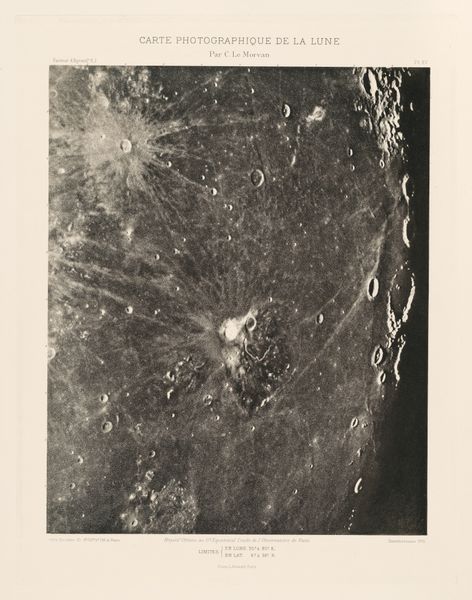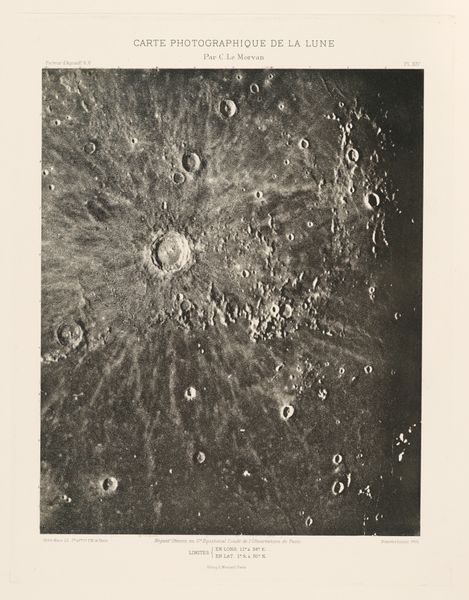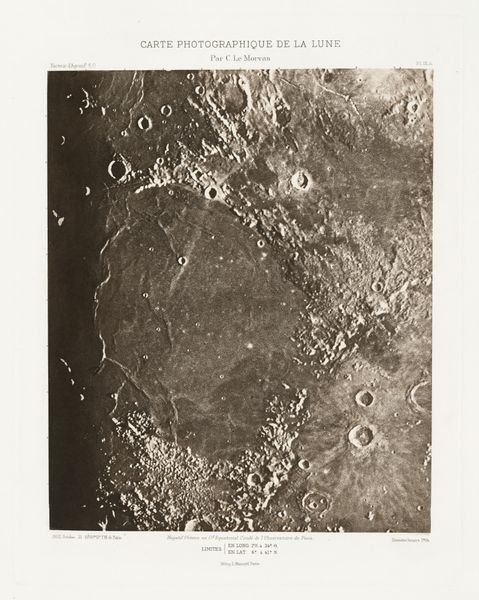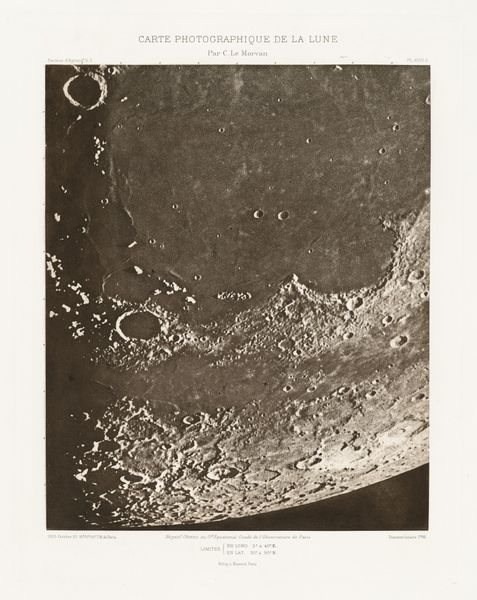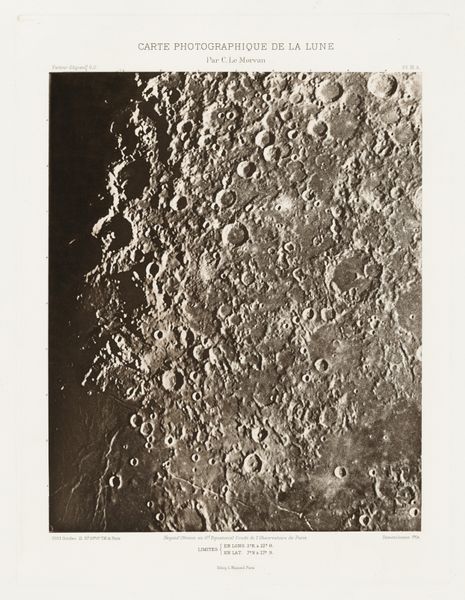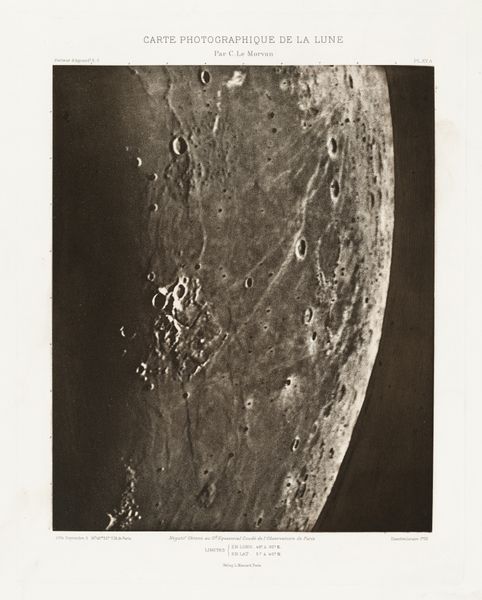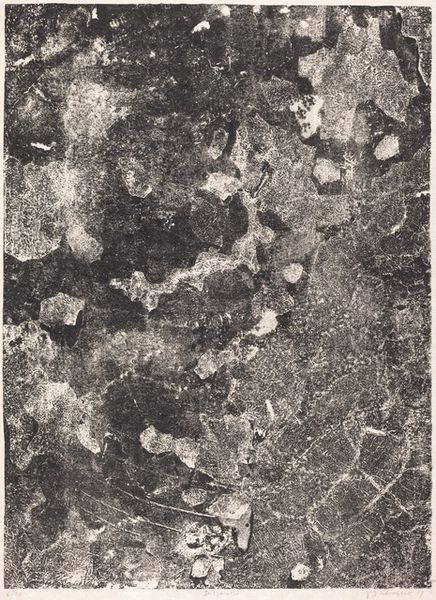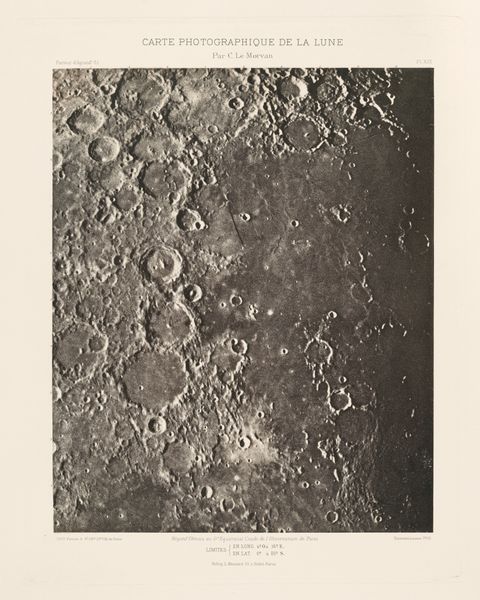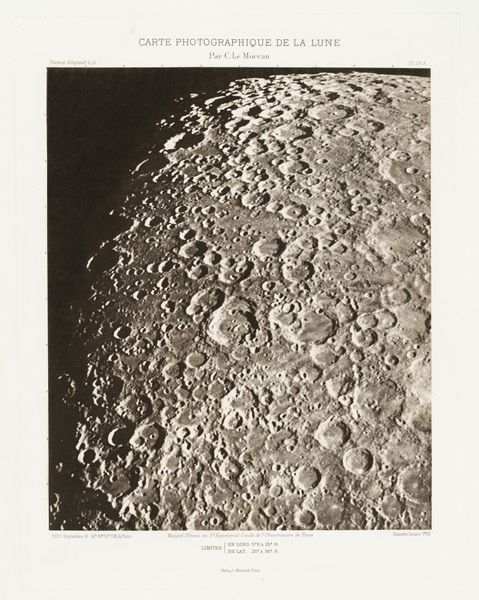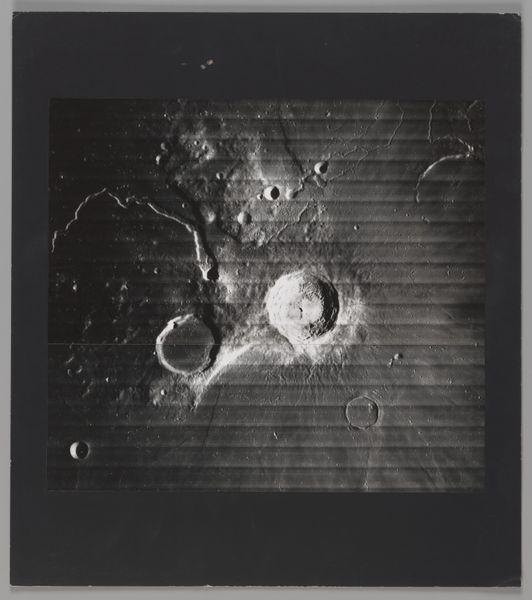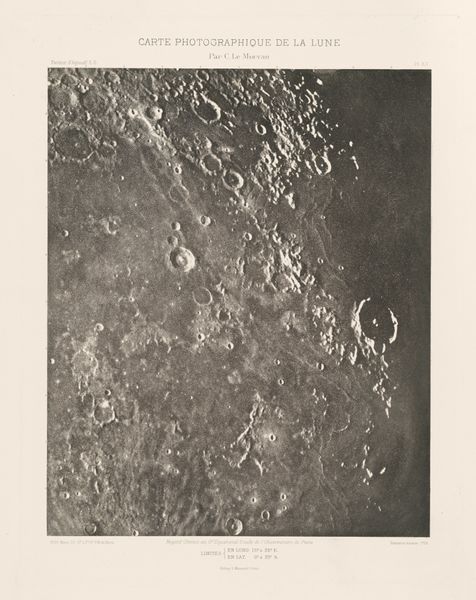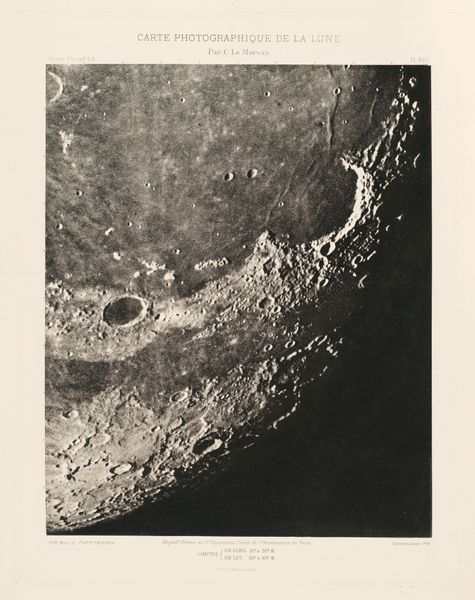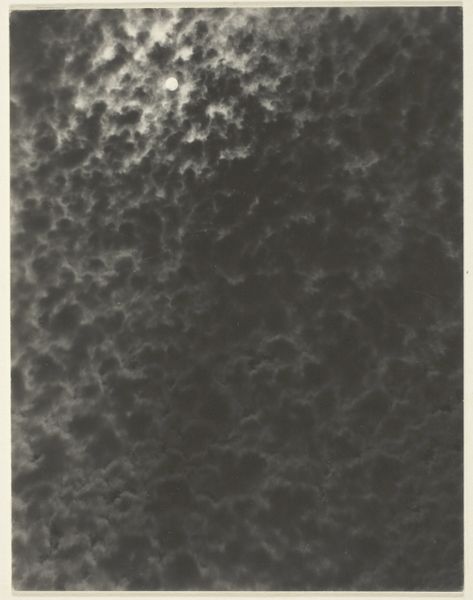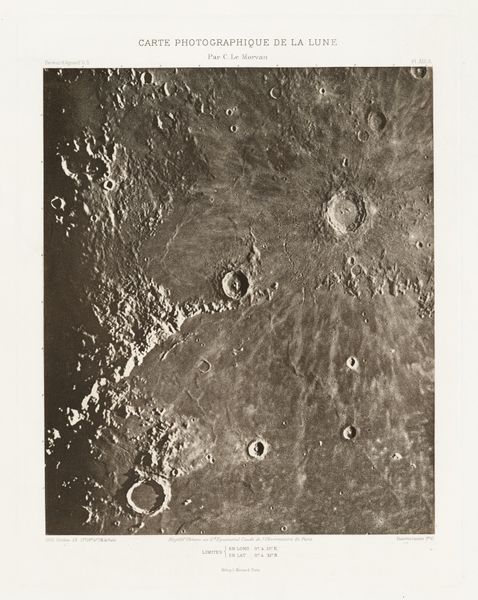
Carte photographique de la lune, planche XIV.A (Photographic Chart of the Moon, plate XIV.A) Possibly 1902 - 1914
0:00
0:00
print, photography
# print
#
landscape
#
photography
#
geometric
Dimensions: image: 31.1 × 25.5 cm (12 1/4 × 10 1/16 in.) plate: 38.9 × 29.5 cm (15 5/16 × 11 5/8 in.) sheet: 49 × 37.9 cm (19 5/16 × 14 15/16 in.)
Copyright: National Gallery of Art: CC0 1.0
Editor: This is Charles Le Morvan's *Carte photographique de la lune, planche XIV.A*, a photographic print possibly from between 1902 and 1914. It depicts the surface of the moon and there’s something so stark, so immediate about its texture. How do you interpret this work, especially considering the period it was created in? Curator: This image is powerful precisely because of its historical context. At the turn of the century, the moon represented the "final frontier," a landscape ripe for scientific exploration, yes, but also projection. Le Morvan’s photograph becomes a kind of stand-in for terrestrial concerns and anxieties, for colonialism’s urge to map, define, and ultimately, claim territory. Consider the ways knowledge, power, and visual representation intersect here. Editor: So you're saying it's more than just a photograph of the moon? Curator: Absolutely. It’s an artifact embedded in a network of power relations. Who had access to this image? How did it circulate? These questions push us beyond simple aesthetic appreciation and into a critical engagement with the sociopolitical dimensions of visual culture. Note how the rigid geometry imposed through the gridded lines intersects the lunar landscape: is there something to be said of how geometry may recall colonialism's push to occupy geographical space, whether it is of the Earth or of outer space? Editor: I hadn't thought about it that way. Seeing it as a document reflecting larger societal drives gives it a whole new depth. Curator: Precisely. By looking at art through a lens that considers issues of power, representation, and historical context, we reveal its broader cultural significance. Editor: I'll never look at moon photos the same way. Thank you!
Comments
No comments
Be the first to comment and join the conversation on the ultimate creative platform.
